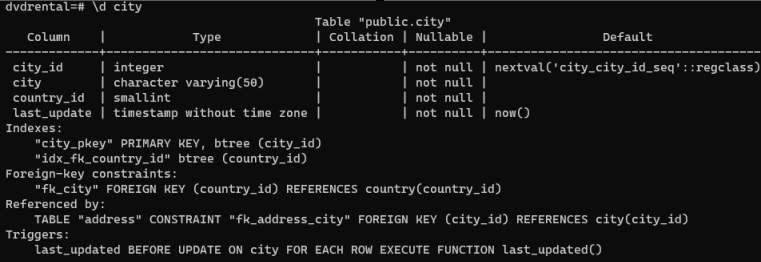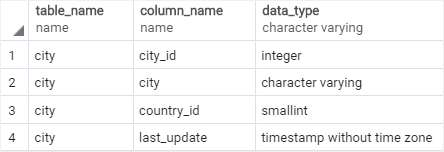August 7, 2023
Summary: in this tutorial, you will learn how to use the psql tool and information_schema to describe tables in PostgreSQL.
Table of Contents
If you have been using MySQL, you typically use the DESCRIBE statement to find the information on a table.
PostgreSQL does not support the DESCRIBE statement. However, you can query the information on columns of a table in a couple of ways.
1) PostgreSQL DESCRIBE TABLE using psql
First, connect to PostgreSQL server using the psql tool:
$ psql -U postgres -W
Second, enter the password for the postgres user:
Password:
...
postgres=#
Third, switch to the database that you want to work with e.g., dvdrental
postgres=# \c dvdrental
Password for user postgres:
You are now connected to database "dvdrental" as user "postgres".
Finally, issue the command \d table_name or \d+ table_name to describe a table. The following example shows the information of the city table:

The command issued a lot of information on the structure of the city table. In addition, it also returned indexes, foreign key constraints, and triggers.
2) PostgreSQL DESCRIBE TABLE using information_schema
The information_schema.columns catalog contains the information on columns of all tables.
To get information on columns of a table, you query the information_schema.columns catalog. For example:
SELECT
table_name,
column_name,
data_type
FROM
information_schema.columns
WHERE
table_name = 'city';

In this tutorial, you have learned how to return information on a structure of a table using the psql tool and information_schema.

